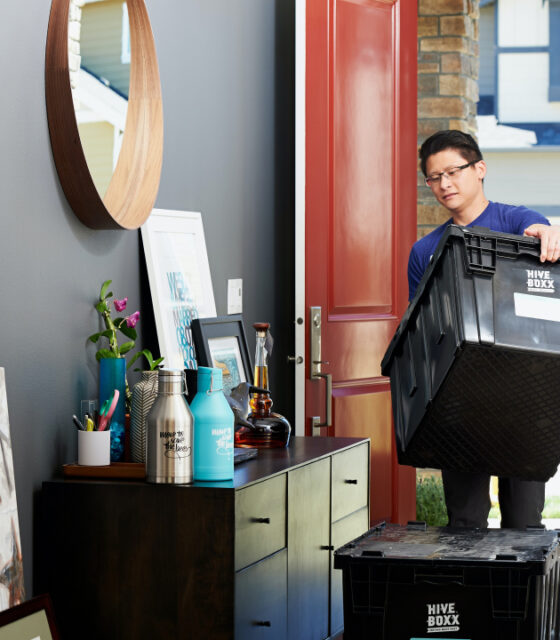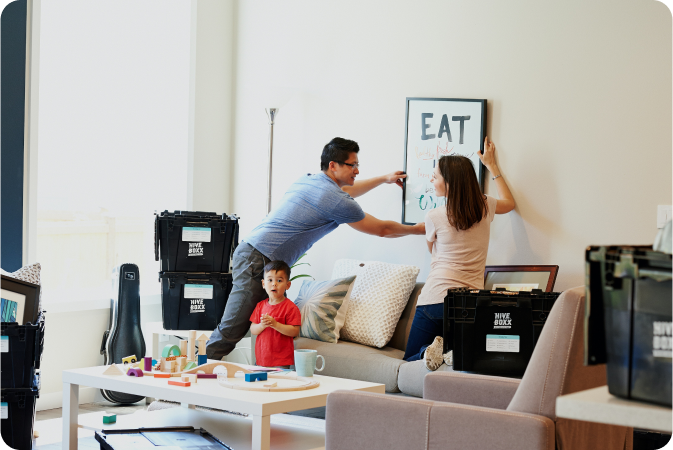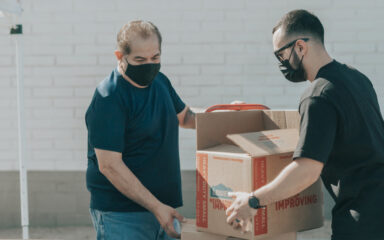The Essential Moving Checklist for Torontonians

Moving is never easy, but a well-planned move and a good checklist can help the process go more smoothly than ever imagined. Above all—don’t leave it until the last minute!
Having a good moving checklist is essential. Use this blog as your go-to checklist to help you reduce anxiety and ensure you get everything done without a lot of fuss.
Moving Checklist for Torontonians
Toronto is the best city! Everything you need or want is at your fingertips—including great moving advice from the pros at Moved In. Print off this essential moving checklist and put it on your fridge to keep you motivated. Do a little each day, and soon you’ll be on your way!

Three Months Out
Planning Your Move
1. Choose an ideal moving date: Remember that movers and moving vans are super-busy on the first of the month, so it’s best to reserve as far in advance as possible.
2. Research moving companies in Toronto or decide to move DIY: Not everyone has the time or wherewithal to move themselves. However, depending on how much stuff you need to move, you might choose to do it yourself. If you need to use a mover, think about how much stuff you have before you call around. Movers charge based on weight but may give you an estimate according to how many rooms you’re moving.
3. Book a moving company or rental truck: Shop around for the best rates, but do your due diligence. If a company charges much less than other movers, it might be a red flag. Choose a reputable company with good reviews and an established reputation.
Two Months Out
Packing Essentials
1. Declutter before packing: Chances are you’ve got stuff that you don’t want to take with you. Go through your closets and storage to decide what to toss or donate. You might even want to have a yard sale. Think about your new place, how much room you have, and imagine how you will arrange everything.
2. Order packing materials: Packing materials like boxes, bubble wrap, and tape can be purchased from any moving or storage company. You might also check with your local grocery store or LCBO to collect boxes. LCBO boxes are perfect for heavy items like books.
3. Start packing up your least-used or non-essential items: Things you won’t need for a while or don’t often use can be packed up now. Be sure to label boxes with what’s in them and the room they’re intended for.
Address Changes & Utilities
1. Change your address with the post office: Address changes can be done in person at the post office or https://www.canadapost-postescanada.ca/. You’ll need to pay for this service, and it’s only temporary, so be sure to inform anyone who sends you postal mail of your new address so you don’t miss anything.
2. When and how to transfer utilities: Utilities require notice to change over. Sometimes, if you’re using the same provider at the new address, it’s as simple as making a call and arranging to transfer your account. However, in cases where you’re changing providers, you may need to give significant notice. Some utilities require 60 days advance notice to close your account, so don’t leave this until the last minute.
One Month Out
- 1. Pack all but the essentials.
- 2. Confirm your moving arrangements with movers or moving van company.
- 3. If you are doing a DIY move, enlist some friends to help or hire local teenagers.
- 4. Start using up all the food in your fridge and freezer. Have a party and cook everything up!
- 5. Arrange for cleaners to come in after you’ve moved out.
- 6. Scope out the parking situation at your destination to ensure plenty of room for the moving truck. Reserve a space if needed.
- 7. If you’re moving into an apartment building or condo, you may need to reserve the freight elevator.
- 8. Find out about the parking situation for yourself and visitors. If you need a resident’s parking permit, now’s the time to apply for one.
- 9. Confirm where and how you’ll pick up the keys to your new place.
Moving Day Tips
- 1. Call a friend. Even if you have movers taking care of things for you, it’s always good to have a friend on hand to help. They can be an extra set of eyes and provide moral support so you don’t get stressed.
- 2. Make sure all boxes are labelled with the rooms they are going to.
- 3. Pack up your essential items and put them aside. They should be last onto the truck or go with you in your vehicle.
- 4. Wrap fragile or special handling items carefully.
- 5. Keep all valuables and IDs on your person at all times.
- 6. Arrange to return the keys to your old place.
- 7. Do a walk-through around the place to ensure you didn’t forget anything.
- 8. Lock up and get going!
Settling Into Your New Home
Welcome home, you! Settling in might be a bit overwhelming initially, but if you’ve used this checklist, you should have power, hot water, cable, internet, and everything you need to feel right at home.

Unpacking guide
Your boxes should all be in the rooms they’re supposed to be. Unpack your essential items first; don’t worry too much about the rest. Now that you’re in your new place, you can unpack bit by bit and get everything just the way you want it.
Tips on how to feel at home in your new Toronto neighbourhood
1. Get acclimatized: If you’ve moved to a new neighbourhood or are unfamiliar with the area, get outside and have a walkabout. Find out where the local convenience stores are, the closest mall, grocery store, LCBO, pizza place, park, and the local coffee shop.
2. Meet the neighbours: If you see neighbours in the hall or the street, introduce yourself. Strike up a conversation to find the best places to eat, shop, and recreate.
3. Understand the parking situation: If you have assigned or off-street parking, you’ll still need to accommodate your guests. Learn what the local parking rules are to avoid getting tickets. The parking police in Toronto are brutal!
Final Thoughts
Here’s wishing you a successful and stress-free move! Use this checklist throughout the process to ensure you don’t miss a beat.


